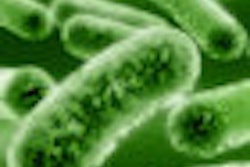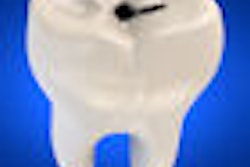
Probiotic ice cream statistically reduced the levels of microorganisms associated with caries in saliva, according to a study in Acta Odontologica Scandinavica (November 2011, Vol. 69:6, pp. 389-394).
The findings could lead to increased usage of dairy foods, which are ideal vehicles for probiotic bacteria, as a means of preventing caries colonization in children, according to the study authors, from Dr. HS Judge Institute of Dental Sciences and Hospital, M.M. College of Dental Sciences and Research, and All India Institute of Medical Sciences.
Previous studies evaluating the effects of probiotic ice cream on oral ecology are "few and far between," they noted; they found two studies that established that probiotic dairy products had an impact on mutans streptococci in adult test subjects.
The new study included 40 participants who were 12 to 14 years old with no clinically detectable caries. Children with orthodontic devices, a history of preventive dental treatment, or who had taken antibiotic medication for the past six months were excluded.
The researchers chose ice cream for this study because of its universal appeal, particularly among children. The probiotic ice cream used in the study was prepared by adding a freeze-dried culture of probiotic strains of Bifidobacterium lactis Bb-12 and Lactobacillus acidophilus La-5 and was manufactured by Amul, India, the authors explained. Both the probiotic ice cream and the control ice cream (no probiotic) had a vanilla flavor.
The participants were divided into two groups, I and II, and told to brush twice daily and avoid xylitol chewing gums and curd.
Compliance not an issue
The ice cream was distributed to the students daily at about 12:00 p.m. for a 10-day period. Not surprisingly, there were no issues with consumption compliance, according to the study authors.
The researchers took four saliva samples during the course of the study and tested them to estimate the levels of mutans streptococci and lactobacilli, with care taken to avoid taking samples within one to two hours of a student brushing or eating. In stage I, the pre-experimental stage, they collected saliva to obtain estimates of mutans streptococci and lactobacilli. In stage II and IV, the children consumed the ice cream samples, while stage III served as a washout stage.
In stages II and IV, the samples were distributed in a process that created a crossover study. So the two groups tried both the control and test ice creams with a two-week gap, stage III, in between intervention stages.
After the researchers evaluated the samples for the density of their bacteria colonies, they found significant reductions in the salivary scores of 14 children after they had eaten probiotic ice cream compared with baseline scores.
"The comparison between baseline versus follow-up salivary mutans streptococci counts after consumption of probiotic ice cream was found to be statistically significant, whereas the comparison was nonsignificant after consumption of control ice cream," the authors wrote. "Probiotic ice cream containing Bifidobacterium lactis Bb-12 and Lactobacillus acidophilus La-5 can reduce the levels of certain caries-associated microorganisms in saliva."
However, many children with high bacteria scores were not impacted by the probiotic ice cream, the authors noted. This might indicate that the intervention period of 10 days was too short to alter the oral ecology favorably and should be increased in future trials, they added. They also recommended a longer washout period.
"The present investigation was an attempt to explore new avenues and vistas for prevention of dental caries by using a commonly consumed product liked by one and all," the study authors wrote. "This alternative strategy of displacing pathogenic bacteria by probiotic bacteria can thus be exploited for the prevention of enamel demineralization."



















